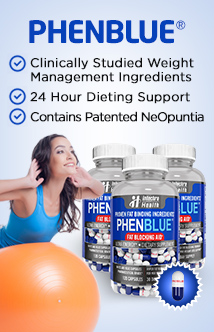
Vegetables and Weight Loss
- Hits: 22613
It is well known that vegetables are full of vitamins, minerals, fiber, and other substances important for good health. But did you know that eating veggies can also be a powerful, healthy way to lose or maintain weight?
Vegetables and Weight Loss go Hand-in-Hand
Regularly adding vegetables to your diet can help to support your weight loss efforts over time. This is particularly true when you focus on non-starchy options.
There are two types of vegetables: starchy and non-starchy. Both types are part of a proper diet, but whereas nons-tarchy varieties can be eaten in abundance, starchy selections contain more sugar, hence portion size need to be kept in check. Starchy vegetables include corn, peas, plantains, potatoes, squash, and yams. Non-starchy vegetables are all of the rest including artichokes, asparagus, beets, broccoli, carrots, cauliflower, cucumber, eggplant, leeks, mushrooms, onions, peppers, salad greens, spinach, tomato, and zucchini.
How Many Vegetable Servings Should I Eat for Weight Loss?
As mentioned above, non-starchy vegetables should be eaten in abundance. If you’re looking for the minimum amount you should eat each day, the USDA recommends at least 2 ½ to 3 cups for men and women, and at least 2 cups for women over age 51. That’s about 21 cups of vegetables each week. Of these, women should eat 3 cups of the starchy form weekly, and men should strive for 6 cups of starchy choices weekly. Women over the age of 51 should have 2 ½ cups of starchy vegetables each week. What is a serving? In general, one cup of raw or cooked vegetables or two cups of raw leafy greens counts as one serving.
Vegetables low in Calories
The following are generally considered 'free foods' in the Diet World as they contain minimal calories, yet most are high in nutritional value:
- Carrots
- Cucumbers
- Radishes
- Fresh Green Beans
- Celery
- Cauliflower
- Cabbage
- Cherry Tomatoes
- Mushrooms
- Lettuce
We're not suggesting you must turn vegetarian, but simply up your intake of fruits, vegetables, legumes, grains, nuts and seeds. And, by doing this combined with other important diet strategies, you may lose weight naturally. Most plant foods are low-calorie, low-fat and very filling. And since they're fresh and whole, you won't be filling your body with processed ingredients.
It's important to consume a wide variety of colorful plant foods to reap the health benefits. That's because each contains different phytochemicals that work synergistically to combat disease. So, the phytochemicals in the pink grapefruit you ate for breakfast, for instance, may fight disease more effectively when combined with the avocado in your salad at lunch.
Vegetables Are Super Foods for Super Health and Weight Loss
Plant foods are all-stars, because each contains unique phytochemicals that work together to fight disease. What's more, there are thousands of foods that have yet to be analyzed, so there's more good news to come.
Based on the latest research, the following foods contain phytochemicals that are proving to be terrific choices, says David Heber, M.D., Ph.D., director of the University of California, Los Angeles, Center for Human Nutrition and author of What Color Is Your Diet? (HarperCollins, 2001).
Eat More of These Veggies!
- Broccoli, cabbage and kale – The isothiocynanates in these cruciferous vegetables stimulate the liver to break down pesticides and other carcinogens. In people susceptible to colon cancer, these phytochemicals seem to reduce risk.
- Carrots, mangos and winter squash – The alpha and beta carotenes in these orange vegetables and fruits play a rol0e in cancer prevention, particularly of the lung, esophagus and stomach.
- Citrus fruits, red apples and yams – The large family of compounds known as flavonoids found in these fruits and vegetables (as well as red wine) show promise as cancer fighters.
- Garlic and onions – The onion family (including leeks, chives and scallions) is rich in allyl sulfides, which can help lower high blood pressure and show promise in protecting against cancers of the stomach and the digestive tract. Also read Benefits of Garlic in Heart Disease.
- Pink grapefruit, red bell peppers and tomatoes – The phytochemical lycopene is actually more available after cooking, which makes tomato paste and ketchup the best sources of it. Lycopene shows promise in fighting lung and prostate cancers.
- Red grapes, blueberries and strawberries – The anthocyanins that give these fruits their distinctive colors may help ward off heart disease by preventing clot formation. Anthocyanins also appear to inhibit tumor growth.
- Spinach, collard greens and avocado - Lutein, which appears to reduce the risk of cardiovascular disease and stroke as well as guard against age-related macular degeneration (which leads to blindness), is also abundant in pumpkins.
4 Tips for Adding More Vegetables to Your Diet
- To incorporate more veggies into your diet, add some to the foods you already eat, such as omelets, lasagna, casseroles, soup, and pasta dishes.
- Frozen and canned varieties can be just as healthy, if not healthier, than fresh because they are packaged at the peak of freshness and retain more of nutrients. Keep in mind, however, that canned vegetables may be loaded with sodium. If you choose to use these, rinse them under some cold water before use to rinse off some of the sodium.
- Invest in a salad spinner. Just wash and dry your lettuce and store it right inside your fridge. It acts as a crisper and keeps the lettuce fresher for a longer period of time. You will always have fresh lettuce on hand for salads and sandwiches. It can also be used to wash and dry almost any fruit or vegetable.
- Vegetables are delicious, convenient, and versatile. Next time you’re shopping for food or looking for a new recipe, try a new veggie you’ve never had before. You just may surprise yourself.














